Fashion and beauty industries finally embrace older models
There’s a seismic change in the way we’re celebrating beauty and style in older age. Will the shift prove to be as ephemeral as youth itself?
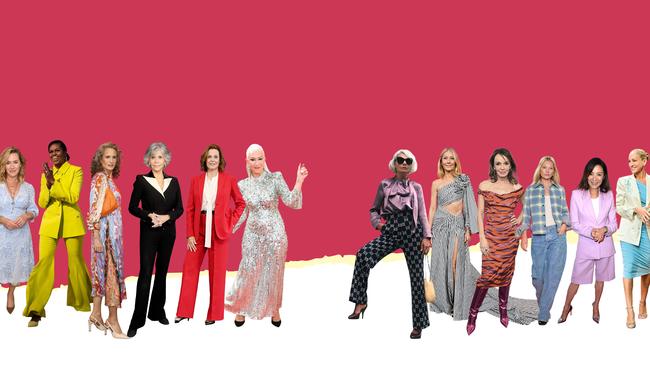
Four years ago, at the age of 56, Penny Hill let her hair go grey. Incidentally, it was soon afterwards that her modelling career started to take off. “It was a big step for me… I was actually so proud to do it,” says Hill, who had dyed her hair blonde for most of her life. The former art teacher and photographer had dabbled in modelling when she was younger before being told quite unceremoniously, at 24, that she had aged out. “That was when a model’s career was kind of considered over,” she says.
Hill returned to modelling in her 50s and found herself tapping into a burgeoning movement on social media with its various pro-ageing categories, denoted by hashtags on Instagram such as #fitoverfifty, #silversisters and #ageisjustanumber. “I was so on board with [the age positivity movement] and it was how I felt in my 50s too,” she says. “I needed inspiration; I needed to know that we women could feel relevant and visible somehow.”
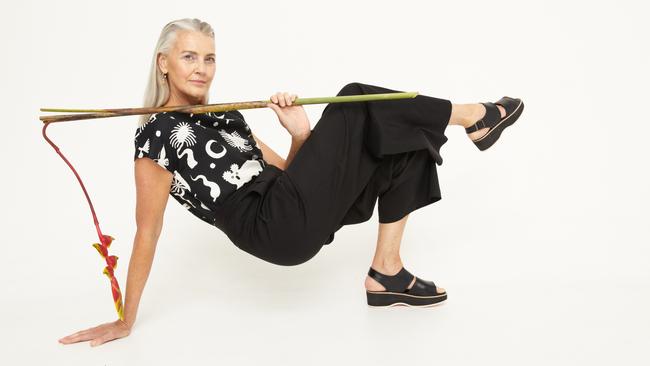
In these online communities she stumbled upon a photographer call-out for a book celebrating women in their 50s. Hill put her hand up. From there she signed with Silverfox MGMT, Australia’s only agency dedicated to models aged 30 and over, and for a time… not much happened. The odd Kmart catalogue came her way, but Hill says she was mostly waiting for a call. In the past few years, however, she has modelled in campaigns for skincare megabrands such as Go-To and Mecca, and in 2022 she walked eight runways at Melbourne Fashion Festival. “To me that was so significant, as a woman at the age of 58 when I started being considered on runways. That’s huge because it was not happening. It was extremely rare,” she says. “Older women have been regarded as invisible and insignificant for so long and it was so encouraging for my demographic to see that this is happening. And probably more importantly because I’m a mother of two daughters in their 20s.”
Call it the silvnaissance or the rise of the silvfluencer (a couple of the pithy names you’ll hear from style commentators), but in recent years there’s been a seismic shift in the way the famously youth-obsessed fashion and beauty industries think about ageing.
It starts, obviously, with visibility. In the past year luxury brands such as Valentino, Bottega Veneta and Balenciaga have cast 50-plus models for their runway shows – including ’90s supermodel Kristen McMenamy, who opened the Valentino haute couture spring ’22 collection aged 57. In the notes for this show Valentino creative director Pierpaolo Piccioli wrote that he wanted to “create a canon that reflects the richness and diversity of the contemporary world and promoting an idea of beauty that is not absolute.”
Last month, at the menswear shows in Paris, French film star Charlotte Rampling, now 77, closed the AMI Paris show, sauntering down the runway in chic and insouciant navy tailoring, her silver hair in a pixie crop. Indeed, silver hair has become the colour du jour – on the Cannes red carpet in 2021, Andie MacDowell, Helen Mirren and Jodie Foster all debuted silvery locks, prompting British Vogue to declare that “grey hair is trending at Cannes”.
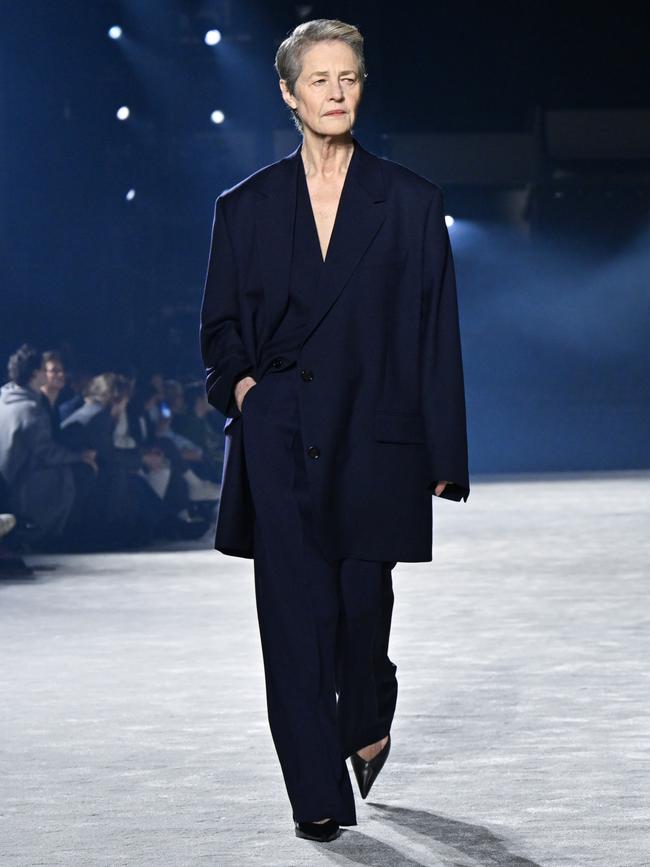
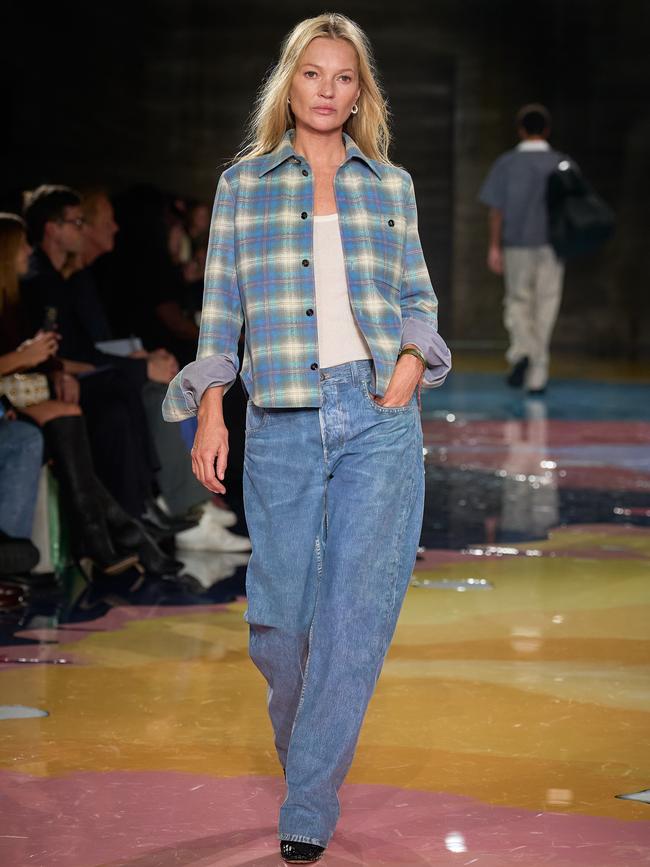
Before all of this, though, there were a few false starts. When Marc Jacobs cast Elle Macpherson, then in her mid-40s, for Louis Vuitton in 2010, it made waves for being extraordinary, practically subversive. The same could be said for the cultural cachet garnered by French luxury brand Celine (then helmed by thinking woman’s fashion idol Phoebe Philo) when it famously cast writer Joan Didion, then 80, in its brand campaign ads in 2015. It all remains culturally resonant today – someone paid $US27,000 for a pair of the late author’s Celine sunglasses in her estate sale last year.
But these mostly felt like isolated incidents. It’s only recently that the trickle has become a flood. Leaving Rampling aside, in recent campaigns Saint Laurent has featured French model Betty Catroux, 78, and singer Joni Mitchell, 79, and at Spanish luxury fashion house Loewe, actress Gillian Anderson, 54. Kate Moss, 49, walked the runway for Bottega in 2022.
And it’s not just high-end fashion week shows. Kim Kardashian’s latest campaign for her lingerie and shapewear brand SKIMS featured model and actress Brooke Shields, 57, actress-singer Juliette Lewis, 49, and Chelsea Handler, 47. SKIMS was, the brand said at the time, celebrating “ageless beauty”.
Sonic Youth vocalist Kim Gordon, 69, recently collaborated on a collection for the denim brand Citizens of Humanity. Maye Musk, mother of the billionaire Tesla founder and Twitter owner Elon, appeared on the cover of US magazine Sports Illustrated’s 2022 swimsuit issue at the age of 74 and beauty conglomerate L’Oreal counts among its ambassadors Helen Mirren, 77, Jane Fonda, 85, and Viola Davis, 57. Locally, Australian label Camilla & Marc has worked with the supermodel Paulina Porizkova, 57, while Esse Studios cast model Rachel Waller, who is in her 60s, for the brand’s show at Sydney Opera House during Australian Fashion Week in May 2022.
Michelle Obama, 59, was lauded by the fashion press for her eye-catching looks while on tour to promote her latest book, The Light We Carry, in December – a highlighter-yellow Proenza Schouler pantsuit the latest in an approach that has been steadily evolving since she debuted her post-White House style in thigh-high Balenciaga boots in 2018.
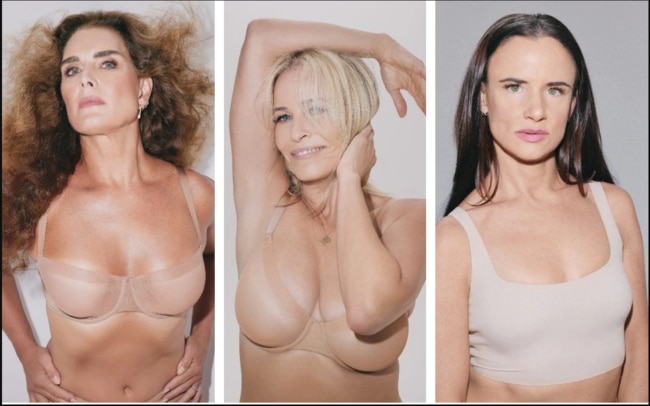
Admittedly, many of the aforementioned have enviable bone structure and ex-supermodel or movie star status. Indeed, University of Sydney associate professor Adam Geczy, whose published work includes The Artificial Body in Fashion and Art, is sceptical. “We are still are looking for someone in their old age [who] has a degree of preservation,” he says. “Because fashion and all of these things is about aspiration. Just because there are older models doesn’t mean there’s some kind of identification with old age. What I’m saying is, don’t get too teary about recognition of old age. It’s just all about marketing.”
But is it? There was a time when no amount of preservation would have led to the ubiquitous display of ageing across all forms of media and culture. The cult of youth had seemed a fixture of the human condition.
University of Melbourne associate professor Lauren Rosewarne, an expert in social sciences, media and culture studies, emphasises the obvious biological imperative in the fascination with youth: “We’re a culture that, particularly for women, still has that connotation of beauty connected to youth and fertility. Now, one of those things, the latter, is largely connected to biology... there’ll always be a biological drive to be attracted to younger women,” she says.
-
“I needed to know that older women could feel relevant and visible”
-
But Rosewarne says the view on what constitutes beauty has shifted. “The range... of appearances we think of as beautiful today has absolutely expanded. Fashion brands have played a role in that. I’m not saying they’ve done it – I think the audience has done it, too – but as a result, they’ve had to be responsive.” What’s more, brands realise they need to at least be aware of cultural shifts and nuances. “Brands... have to look like they’re abreast of the zeitgeist because otherwise what are you doing on the catwalk?”
Ultimately, Rosewarne notes, money talks. “Capitalism explains primarily why we are seeing more older women on catwalks, fronting advertising campaigns... there’s a growing awareness that that demographic has more disposable income than they’ve had in previous generations, and therefore appealing to them is a way to make money,” she says. Plus, “there are cultural and social things happening that are also pushing this. We’re in a world where we talk about the importance of diversity and representation of all people on catwalks and in campaigns, and certainly with social media where you can see sort of grassroots-type campaigns… You’re seeing much more diversity online and as a result across all media.”
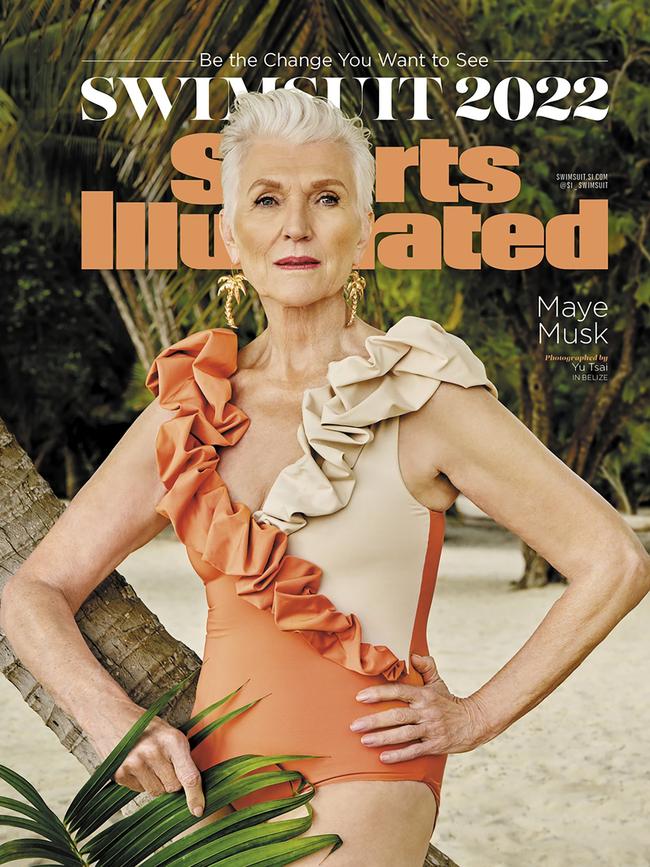
Fashion has certainly embraced the older woman. Forget frumpiness and sensible cardigans. The clamour around 59-year-old Philippine Leroy-Beaulieu, who plays the super slinky, bikini-wearing Sylvie in the Netflix blockbuster Emily in Paris, has been deafening. Leroy-Beaulieu went viral online when she was photographed in a sheer, clinging emerald green AMI Paris dress during Paris Fashion Week in January last year, and last month starred in all the best dressed lists for a daring Schiaparelli creation she wore at the French fashion house’s couture show.
eroy-Beaulieu told Glamour magazine in 2021: “I understand the insecurity, the pressure that we get, especially in our business. But if somebody doesn’t start saying, ‘This is my age, and this is who I am, my wrinkles are my wrinkles, I own my wrinkles, this is my whole life…’ Ageing gracefully is being a kinder person than you were when you were younger, because life kind of polishes you.” Or, as she told me in a Zoom call about the fuss that sheer dress caused, “OK, guys, you saw my tits, so what?”
TV and film is certainly reflecting the movement. The decision to resurrect the Sex and the City cast for the spin-off series And Just Like That seems symptomatic of the shift. Episodes deal with menopause, cosmetic surgery and basic intergenerational misunderstandings, and show far more sympathy than usual towards the generation that did not grow up as digital natives. Perhaps with the exception of the sitcom The Golden Girls (1985-92), seeing women of a certain age on the screen routinely has been deeply unusual. A generation beyond Sarah Jessica Parker and co, Jane Fonda and Lily Tomlin are flying the flag for octogenarian women in Grace and Frankie.
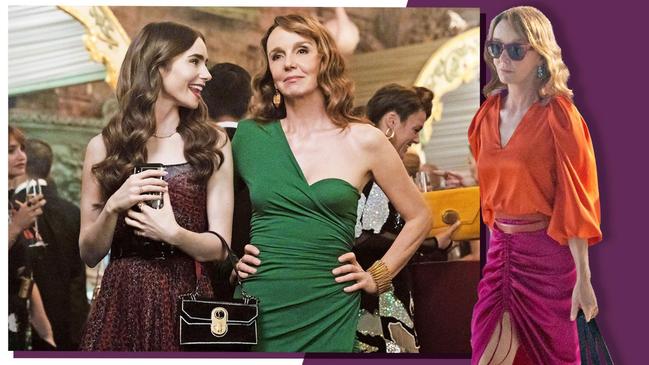
Rather than let it all go below the radar – “nothing to see here!” – women in the public eye are looking to give voice to the moment, to embed these changes in culture and society. In a panel hosted by Maria Shriver last year, Jamie Lee Curtis, 64, said: “This word ‘anti-ageing’ has to be struck. I am pro-ageing. I want to age with intelligence, and grace, and dignity, and verve, and energy.” Gwyneth Paltrow, actress turned wellness entrepreneur and leader of the Goop empire, told Vogue US last year that turning 50 was a liberation. “I feel really inspired by turning 50. I used to care so much what people thought of me. [Now] I don’t care. It’s so nice.”
Drew Barrymore, 47, has her own beauty brand, Flower Beauty, and also frequently appears on her social media platforms, and for the likes of cosmetic giant Garnier. Barrymore stated on her own talk show: “I don’t want to fight nature. I’m raising two daughters. We were raised in an industry where it was desired to drink off the foundation of youth, and I just never subscribed to it.”
Fighting too hard against the natural ageing process is becoming less socially acceptable, as the recent backlash against Madonna’s (apparently) surgically altered appearance at age 64 demonstrated – people can be very judgmental about older women’s choices when those choices don’t fit the zeitgeist.

The ageing beauty shift coincides with three other trends – all galvanised by social media: the cult of nostalgia (see Cher’s appearance on the runway for Balmain last year); the push towards authenticity as more women dare to bare their faces and bodies as they are (Barrymore, Moss, Paltrow, Victoria Beckham, and Kate Hudson, 43, happily demonstrating their makeup routine on the internet, starting of course with an unadorned and unfiltered face); and finally, the diversity push.
Anastasia Lloyd-Wallis, chief operating officer and head of consumer insights at retail consultancy group Retail Doctor, doesn’t see the use of older models as a mere marketing ploy when there’s so much financially at stake, and when consumers are more vocal about what they want. As she points out, 48 per cent of Australians are aged 40-plus and this demographic accounted for 64 per cent of retail spend in 2020.
Research by the Retail Doctor Group into how people shop found that 91 per cent of consumers are more likely to buy something from a brand that provides recommendations that feel relevant to them. Seeing themselves reflected in a brand’s clothes or using the products is part of this. “We’re seeing it in all the data that we look at: ‘I want to hear from people like me’,” says Lloyd-Wallis. “I think this is why we’re seeing this marketing that showcases a more broad consumer because they’re looking to see themselves. We’re seeing it not just in older models, we’re seeing it in the body confidence movement [too]. I think this is another expansion of, ‘I want it to reflect what and who I am and where I am in my life’.”
It’s not only the idea that you can expand your customer base by speaking to more people. You can also change ideas of what’s appealing, desirable or cool, notes Inii King, founder and chief creative officer of the New York strategy, branding and marketing agency King & Partners, which has worked on campaigns for the likes of SKIMS and activewear brand Outdoor Voices. “I think it’s a positive shift that feels refreshing, natural [and] also appealing to real customers with buying power in many cases,” King says. “Creators, marketers and consumers are getting used to seeing campaigns that feel more realistic and inclusive, and it’s starting to look almost old-fashioned or boring to see supposedly ‘perfect’ models.”
The old retail chestnut of putting the customer first is, as Lloyd-Wallis notes, more relevant than ever. “I almost feel like it’s become an overused buzzword, being ‘customer centric’. But we have seen that flip with brands and they are now saying, ‘Well, actually, who are our different segments of customers and how do we talk to each one individually? You know, we may be wanting to attract 25- to 35-year-olds, but we do have a core [group] in 50- to 60-year-olds. So how do we connect with them and what do we need to do?’
“It’s a change of mindset from, ‘This is my product, this is who I am as a brand and take it or leave it’, to more of, ‘Well, who is actually our customer and what do they hear from us?’”
-
“It’s a positive shift that’s appealing to real customers with buying power”
-
Skincare brand Go-To, founded by Zoë Foster Blake in 2014, has used older women for its ad campaigns and social media posts. Leonie Faddy, the brand’s chief marketing officer, says around 12 per cent of its customers are over the age of 54. “We feel it is important for us to represent this cohort in everything from our campaign shoots to social media talent and traditional advertising,” Faddy says. “We know people want to see themselves represented in the media, and this customer is a key player in skin and self-care products.”
Rachael Proud, creative director of luxury retailer MatchesFashion’s in-house brand Raey, disputes the idea that older models are a “trend”. Proud often features older people in her marketing collateral and social posts simply because she sees the brand as one to be worn by people of all ages. “We feel it is really important that we reflect the diversity of our customer and ourselves, to be honest, “ she says. “It is inspiring to see a 60-year-old in a tracksuit – too right she should wear it. When we are shooting, we like the models to come on the day of the shoot with their hair how they like it; we just give them a face massage and some moisturiser, a dab of mascara and that is it – then we spend the whole day of the shoot trying to make them laugh. Life is tough enough without people needing to be super serious about clothes.”
It’s something that Charlotte Hicks, founder and creative director of Australian label Esse Studios, has entwined into her brand too. She believes her clothes – chic, thoughtful and well-made – are for women aged anywhere from 18 to 80 (“I gave some pieces to my aunt who’s 86 for Christmas”). “I’ve always seen Esse Studios as a brand that really kind of transcends age,” Hicks says. “I think [age inclusiveness] is changing more broadly, and it has to translate in reality. It’s all well and good to have the campaign with an older woman or whatever, but I think it actually has to translate. And the pieces themselves need to be wearable. They need to have body shapes considered… not just the theory of it. What was really lovely was that Rachel, one of the older women in the runway show, couldn’t wait to buy the outfit [she wore on the runway] for herself… The most important thing is that the actual woman and the actual customer is converted and happy.”

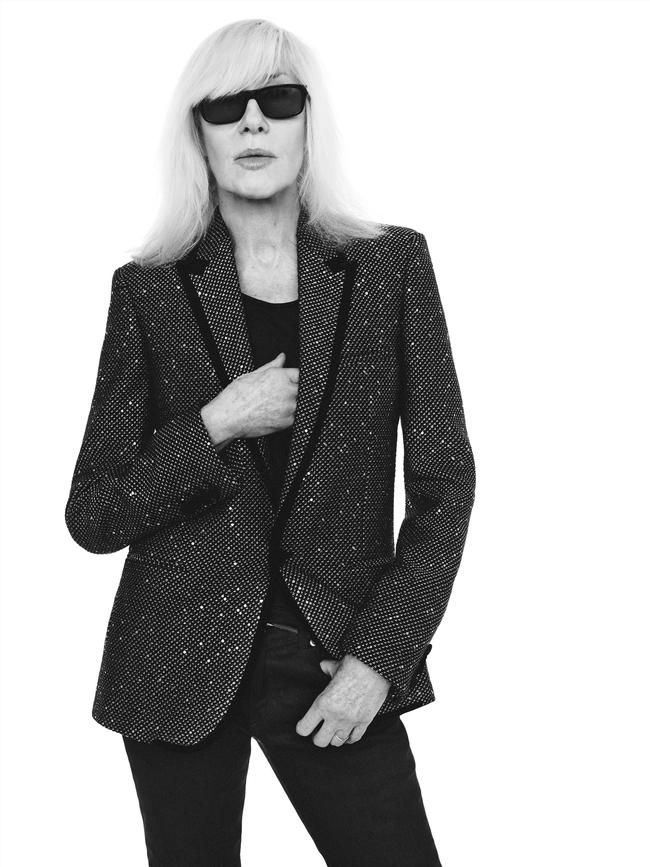
Brigitte Warne, CEO and co-founder of the Silverfox MGMT modelling agency that signed Penny Hill, says business is booming. The agency experienced 40 per cent growth in 2022 compared to the year prior. It’s not only that its models, ranging from 30 to 87, are getting more work since the agency first launched seven years ago, but also the work is more varied and infinitely more glamorous.
Warne says the agency now works with most major Australian fashion and beauty brands, including R.M. Williams, David Jones and Mecca. The fashion editorials, campaigns and runways Silverfox’s models are booked for are worlds away from the work with pharmaceuticals, superannuation companies and retirement villages that they started with.
“When we started the agency essentially we were begging people to use our talent. It was a real battle and people were just really unsure about what we were doing,” says Warne, who started the agency when she was 25 after a successful modelling career of her own (yes, she too was told she was ageing out). “But I was so clear on our vision and what we wanted to achieve and I absolutely knew that there was a space in the market.”
Now Warne says the body positive movement, which has advocated for other kinds of diversity, is now, finally, tapping age inclusiveness. She’s the first to admit that it has taken time to get there. “I think there was this conception that men can get older and it’s ageless and timeless and it’s not seen as negative at all. But I think with women, it was really seen as this absolute taboo. Like, people didn’t want to talk about it… And there is such a big shift away from that now,” she says.
Underscoring Jamie Lee Curtis’s point, she adds: “Even brands who use that terminology ‘anti-ageing’ will get smashed for it… People don’t want anti-ageing, people just want to age and feel beautiful.”

Warne says a growing cohort of older social media influencers such as Grece Ghanem, 58 (a personal trainer and former microbiologist with nearly 1 million followers), has snapped up campaigns with luxury retailers and brands, driving brands to become more age diverse. Ghanem’s style resolutely dissolves any ideas of what is and isn’t “age appropriate”. Some of her recent outfit posts have included cropped denim jackets and a jaw-dropping backless sequinned mini-dress.
“People will tell you if they love something, if they see it on social media they will comment and say, ‘I love this model, this is a great campaign’ and vice versa,” says Warne. “Consumers have such a bigger voice and say in what goes on. So there is no doubt in my mind that [age diversity] is not only here to stay, it’s just going to continue to get bigger and more diverse and more inclusive.”
Warne has spent time teaching some of her models how to use a smartphone as the agency branches out into social media campaigns and content creation. It’s a move that fits with research around how older people are engaging with social media platforms. The Australian Communications and Media Authority (ACMA) reported that social media use among Australians aged 75 and over doubled year-on-year to June 2020 as a result of Covid-19 restrictions. Pew Research found that social media use by Americans 65 and older has grown fourfold since 2010, while use by younger adults in this period has remained constant.
Of course, like any business with a profit margin and product to move, much of the education has come down to something quite essential: money. It talks! “We had to change people’s perspective and mindset around what ageing is and what age really looked like and how it was really irrelevant so long as you felt that that model fit who your target audience was and who your consumer was,” says Warne.
“We looked at a lot of studies and one of the biggest found that using [a model] who related to your consumer increased their purchasing intent by 200 per cent. So essentially you could double what you were making financially by just using the right talent. So it was sort of this no-brainer in terms of brands… and that’s when we saw this snowball effect.”
Penny Hill believes there’s growing recognition that we should all be so lucky to experience old age. “I’m excited by how much it’s shifting, and I know it’s not going to go backwards,” she says. Echoing one of Gwyneth Paltrow’s more grounded sentiments, she adds: “Just having that mindset of embracing and loving the purpose of ageing is very liberating.”

To join the conversation, please log in. Don't have an account? Register
Join the conversation, you are commenting as Logout